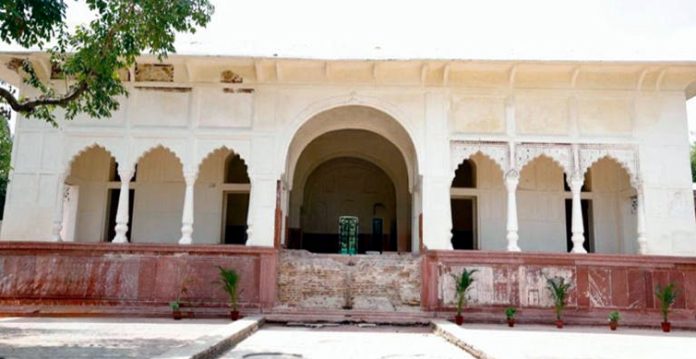After lying in neglect for decades, Delhi’s Sheesh Mahal—an architectural jewel from the Mughal era—has finally been restored to its former glory. Nestled within the historic precincts of Shalimar Bagh in North Delhi, this 17th-century monument reopened to the public on July 2, 2025, after an extensive restoration effort. Built in 1653 during the reign of Emperor Shah Jahan, Sheesh Mahal, meaning “Palace of Mirrors,” now stands as a glittering emblem of Delhi’s forgotten Mughal legacy.
The revival of this historical gem was set into motion following a crucial site inspection in early 2024 by Delhi’s Lieutenant Governor Vinai Kumar Saxena. Shocked by the state of disrepair, his visit triggered a multi-agency collaboration between the Archaeological Survey of India (ASI) and the Delhi Development Authority (DDA). While the ASI meticulously undertook the architectural conservation, the DDA brought the surrounding gardens back to life, restoring the classic Char Bagh-style layout—a hallmark of Mughal garden design, representing the four gardens of Paradise.
What sets this restoration apart is its devotion to traditional techniques. Conservation experts employed Lakhauri bricks, lime surkhi, and organic materials such as jaggery (gud), bael fruit pulp, and urad dal paste—replicating the very methods once used by Mughal artisans. This commitment to authenticity ensured not just structural preservation, but also cultural and aesthetic fidelity.
Also Read: Hyderabad’s Laad Bazaar is being restored to its former glory
Sheesh Mahal is more than just a remnant of the past; it is a monument where history was made. It served as the venue for the first coronation of Aurangzeb in 1658. The palace was once part of the larger Aizzabad Garden complex, believed to have been built in memory of Aizzun-Nisha Begum, and was originally known by the poetic name ‘Shalimar’, meaning “abode of pleasure.”
The successful revival of Sheesh Mahal stands as a testament to Delhi’s enduring heritage and the importance of safeguarding its historical narratives. With its doors now open to the public, the palace is set to become a major cultural and architectural attraction in the capital.
(This story is sourced from a third-party syndicated feed. Raavi Media takes no responsibility or liability of any nature. Raavi Media management/ythisnews.com can alter or delete the content without notice for any reason.)


